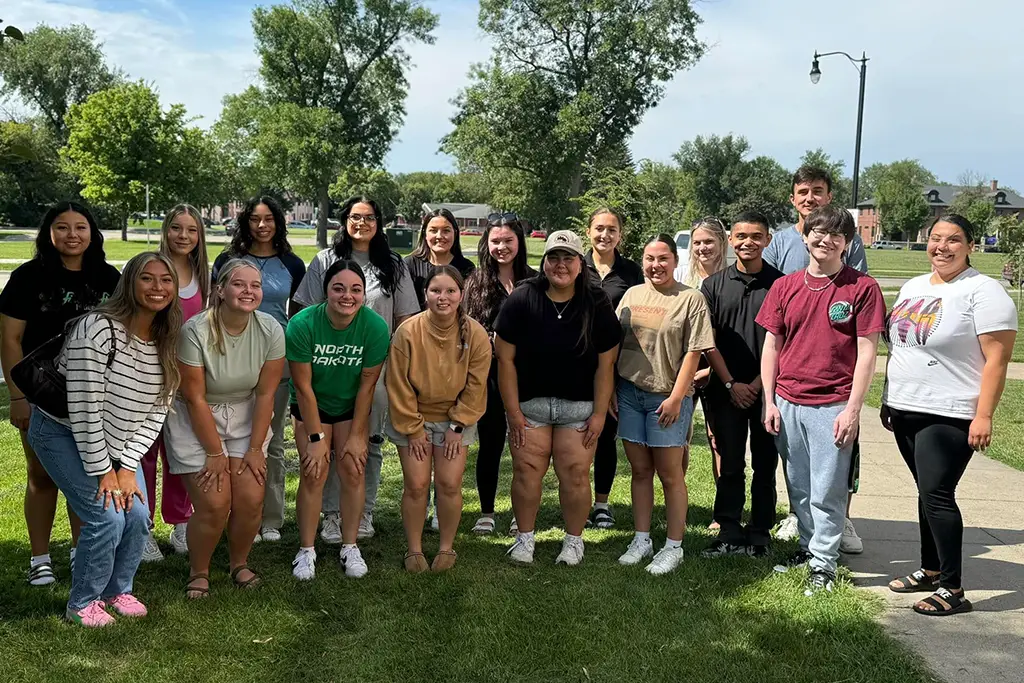Honoring our History and Traditions
Each spring, the RAIN Program hosts a Traditional Meal and Honor Ceremony to celebrate graduates through tradition, culture, and community.
At the heart of this gathering is a traditional meal shared among students, families, and friends, along with sacred practices such as Star Quilt presentations, honor songs, and a Friendship Dance. This tradition reflects RAIN’s culture of caring and the strong connections students carry into their careers.
RAIN Program History
In the late 1980s and early 1990s, leaders across the nation recognized a critical gap: while ethnic minorities made up a meaningful share of the U.S. population, they were deeply underrepresented in nursing and healthcare professions. At the time, fewer than 1% of registered nurses were American Indian — leaving tribal communities and the Indian Health Service (IHS) struggling to meet growing healthcare needs.
The University of North Dakota answered this call in 1990, when the College of Nursing and Professional Disciplines received funding through the Indian Health Care Improvement Act to launch the Recruitment/Retention of American Indians into Nursing (RAIN) Program. UND’s RAIN Program was one of just four projects nationwide supported under this federal initiative. Its mission: to increase the number of American Indian nurses, nurse midwives, and nurse practitioners prepared to serve Native people.
RAIN’s Impact
From the very beginning, RAIN made an impact. In just a few years, enrollment of American Indian students in nursing at UND increased from 4% to 10%, demonstrating the program’s ability to open doors and support their success.
In 1992, RAIN was elevated to permanent program status through the creation of the Quentin N. Burdick Indian Health Programs, which also includes the Indians into Medicine (INMED) and Indians into Psychology Doctoral Education (INPSYDE) programs. Together, these initiatives honor Senator Quentin Burdick’s legacy and UND’s commitment to the nation’s responsibility to support the health and well-being of Native people.

Our Work Continues
Today, RAIN continues its founding purpose: preparing American Indian students for nursing and healthcare careers that honor culture, strengthen communities, and expand access to care across tribal nations, rural areas, and all of North Dakota.